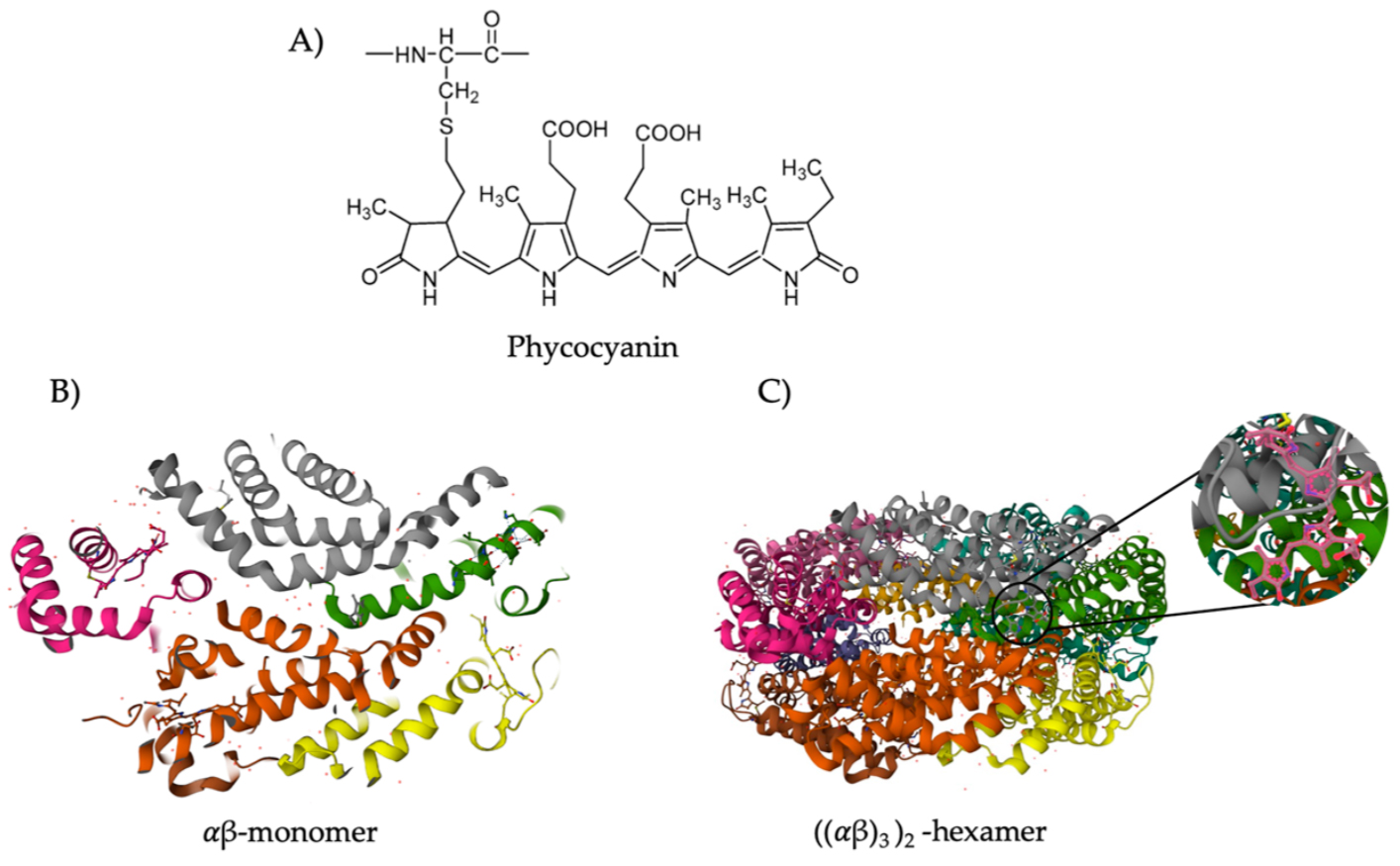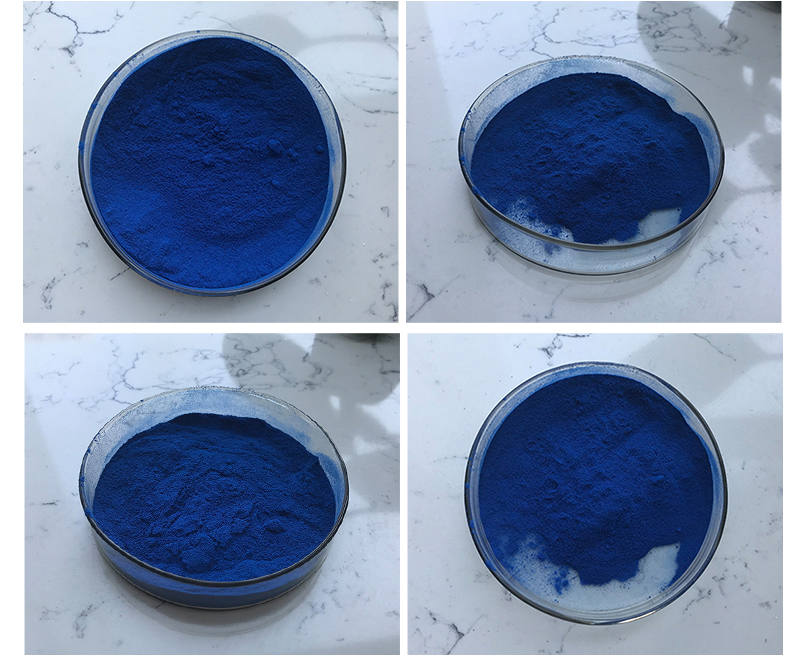Phycocyanin is a water-soluble protein-pigment complex found primarily in cyanobacteria (also known as blue-green algae), red algae, and some types of cryptophytes. It belongs to the group of pigments known as phycobiliproteins, which are responsible for capturing light energy during photosynthesis. Phycocyanin has a blue color due to its absorption of light primarily in the orange and red regions of the electromagnetic spectrum.
Basic Information of Phycocyanin:
1.Chemical Structure: Phycocyanin is a biliprotein, which means it contains bilins (open-chain tetrapyrroles) as chromophores. These bilins are responsible for the pigment’s color and its ability to absorb light.
2.Function: Phycocyanin plays a crucial role in the light-harvesting process of photosynthesis in cyanobacteria and other algae. It absorbs light energy and transfers it to the chlorophylls, which then use this energy to drive the photosynthetic reactions.

3.Color: Phycocyanin appears blue due to its absorption peak around 620–650 nm, primarily in the orange-red part of the light spectrum, and its emission around 650–700 nm.
4.Applications:
- Nutritional Supplement: Phycocyanin is sometimes used as a dietary supplement due to its antioxidant and anti-inflammatory properties. It is typically found in spirulina (a type of cyanobacteria), which is often marketed as a superfood.
- Natural Food Coloring: Because of its bright blue color, phycocyanin is used as a natural food colorant (E-phyco), especially in beverages, candies, and ice creams.
- Health Benefits: Phycocyanin is studied for its potential health benefits, including antioxidant, anti-inflammatory, and immunomodulatory effects. It may help in reducing oxidative stress and improving immune responses.
5.Source: Phycocyanin is primarily found in cyanobacteria like Spirulina and blue-green algae, but can also be found in certain species of red algae.
6.Stability and Extraction: Phycocyanin is generally stable in neutral pH environments but is sensitive to extremes of temperature and light. It is commonly extracted from spirulina using aqueous solutions, often using mild methods to preserve its bioactivity.

Key Properties:
- Solubility: Water-soluble.
- Color: Blue (due to phycocyanobilin).
- Molecular Weight: Varies between different species, but generally ranges from 240 kDa to 300 kDa.
Phycocyanin is vibrant color and health-promoting properties have made it increasingly popular in the health and wellness industry. However, its use in food and pharmaceuticals must comply with relevant regulations depending on the region.
